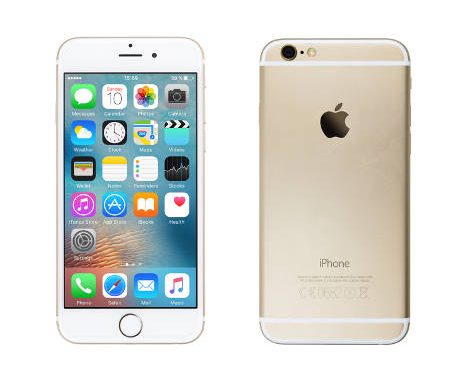Apple Stock: Slowing Growth Means More Dividends?
What should Apple Inc. (NASDAQ:AAPL) do with its $238.0-billion cash hoard? The simple answer to this very complicated question is that it should hike its dividend, maybe even double it.
This logic will work if we believe that Apple is entering a mature stage. The company will become a part of the group of tech companies which have been through a high-powered-growth era and have successfully achieved a soft landing in their business cycle.
These companies include Microsoft Corporation (NASDAQ:MSFT), Intel Corporation (NASDAQ:INTC) and International Business Machines Corporation (NYSE:IBM). All three of these companies currently have stable growth trajectories.
I think there are signs that Apple is getting closer to this group and moving away from those high-flying technology names in which investors don’t want to settle for less than double-digit growth in their earnings.
Apple sales are no longer growing as quickly as they did a couple of years ago. Some observers believe that they may never return to the pace which made the company the darling of the tech world.
While Apple continues to make more profits than any company in the world, it’s been able to squeeze less from each dollar of sales. The company’s operating margin, a measure to analyze a company’s pricing strategy and operating efficiency, was 28% in the past 12 months, the lowest in seven years. (Source: “Apple’s Margins Lose Their Shine,” Bloomberg, October 13, 2016.)
There is no doubt that Apple rewards its investors with dividends each quarter. But for some, it’s painfully low, given the fact that it has an amount of cash which, on its own, can fund the creation of one of the biggest companies on Earth. Who else has more than $200.0 billion sitting in their bank account?
Let’s look at Apple’s current dividend program and why I think it’s not enough to satisfy the appetite of investors who are holding one of the most expensive stocks on the street.
In the last quarter, Apple generated $16.0 billion in operating cash flow and returned $9.3 billion to investors through dividends and share repurchases during the quarter. Yielding 2.14%, AAPL stock pays a quarterly cash dividend of $0.57 per share (Source: “Apple Reports Fourth Quarter Results,” Apple Inc., October 25, 2016.)
Don’t get me wrong, returning $9.3 billion to investors in a quarter is a lot of money to spare. But in the world of dividends, it’s all relevant. For many investors who bought AAPL stock at its peak, this may not be enough cash to brag about.
One measure to analyze how generous a company is when it comes to returning cash is to look at its payout ratio. Apple’s current dividend payout ratio is 26.23%.
Let’s compare this with the dividend payout ratio of other tech giants. Microsoft’s 2.5% dividend yield is almost the same as what Apple stock is offering to its investors.
But when you use the dividend payout ratio, you get a totally different picture. Microsoft’s dividend payout ratio is 69%, while Intel, the world’s largest chip-making company, returns about 49% of its free cash to investors, offering an over-three-percent yield.
Higher Dividends May Boost Apple Stock
Here comes the most complex part of the puzzle: should Apple be willing to sacrifice its growth and return more cash to investors, instead of plowing it back into the business?
If Apple is hoarding cash for future growth, then investors aren’t buying this logic, based on the performance of AAPL stock. Over the past year, AAPL stock has done virtually nothing for its investors. It’s down more than three percent during that period, underperforming against other benchmark indices, suggesting that the market consensus is that Apple is entering a slow and mature growth cycle.
I think this is the right time for Apple to create excitement for its stock and start increasing its dividend at a time when capital gains are hard to come by. I think gradual dividend increases are the next big thing for investors to watch for.
And it may not take too long to materialize if AAPL stock continues to disappoint investors.
